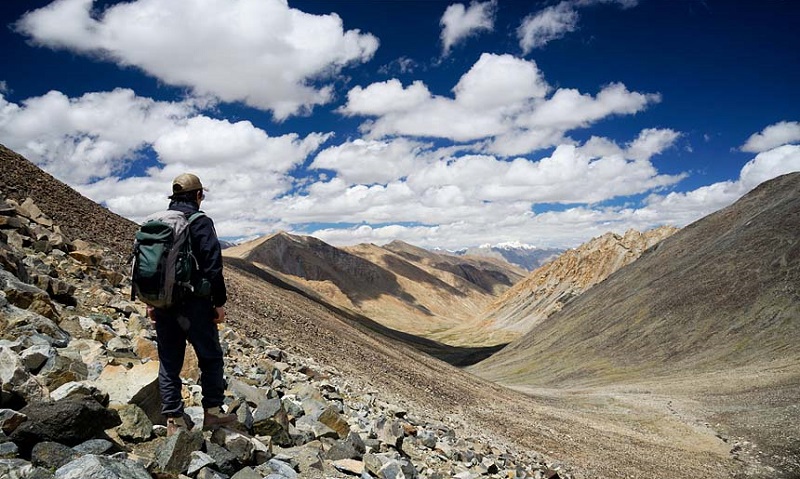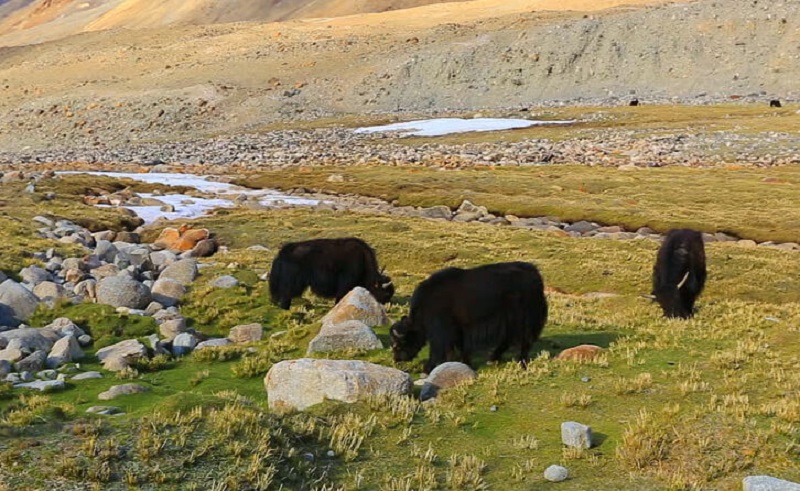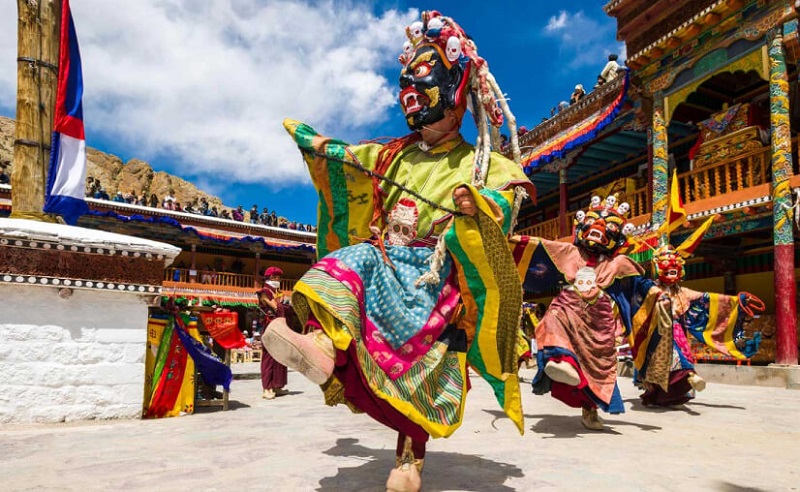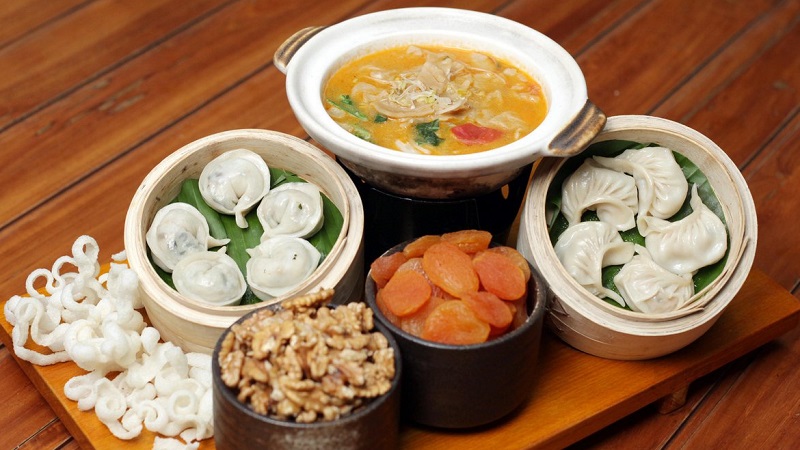Leh Ladakh is a region located in the Himalayas in the northernmost part of India. It is a land famous for its breathtaking landscapes, awe-inspiring mountains, tranquil lakes, and rich cultural heritage. Discover this enchanting region with Ladakh tour packages, which offer a unique blend of natural beauty and cultural diversity. Leh is the capital of Ladakh and serves as the gateway to this captivating region. With a unique blend of natural beauty and cultural diversity, Leh Ladakh has become a popular destination for adventure enthusiasts, nature lovers, and spiritual seekers.
How To Reach Leh Ladakh:
Leh Ladakh can be reached through various means:
By Air: The fastest way to reach Leh is by air. Kushok Bakula Rimpochee Airport in Leh is well connected to major cities of India including Delhi, Mumbai, and Srinagar. Many airlines operate regular flights to Leh, making it the most convenient mode of transportation.
By road:
1. Srinagar to Leh: This route goes through the beautiful Kashmir Valley to the famous Zoji La Pass. This road offers a wonderful view of mountains and valleys.
2. Manali to Leh: This route crosses several high-altitude passes including Rohtang Pass and Tanglang La. It offers breathtaking views but is accessible only during the summer months (June to September) when the snow melts.
By Bus: Government and private buses run from Srinagar and Manali to Leh during the summer season. Bus travel can be long and tiring but it is an economical option for budget travelers.
By Motorcycle: Many adventure lovers like to go on a motorcycle trip to Leh Ladakh. You can rent a motorcycle in Delhi, Manali, or Srinagar and go to Leh via the respective routes mentioned earlier. Make sure you have the necessary permits, safety gear, and prior experience riding on challenging terrain.
Best Time To Visit Leh Ladakh
The best time to visit Leh Ladakh is during the summer months, from June to September when the weather is pleasant and the roads are open. During winter the region experiences extreme cold and most of the mountain passes are closed due to heavy snowfall. It's important to note that the weather in the mountains can be unpredictable, so it's worth checking local weather conditions before planning your trip.
Places to Visit in Leh Ladakh:
- Pangong Tso: A captivating high-altitude lake famous for its changing colors and serene beauty. She became popular after starring in the Bollywood film "3 Idiots".
- Nubra Valley: Situated at a high altitude, Nubra Valley offers breathtaking landscapes, sand dunes, two-humped Bactrian camels, and the famous Diskit Monastery.
- Leh Palace: A historical palace in Leh that offers a panoramic view of the city and the surrounding mountains. It reflects the rich cultural heritage of the region.
- Magnetic Hill: Known for its magnetic properties, this hill creates an optical illusion where vehicles appear to move upward without any engine power.
- Hemis Monastery: Ladakh's largest and richest monastery, Hemis is famous for its annual Hemis Festival and houses an impressive collection of ancient artifacts and thangka (Buddhist paintings).
- Zanskar Valley: A remote and picturesque valley known for its frozen river treks, rugged landscape, and ancient monasteries.
- Tso Moriri: A tranquil high-altitude lake surrounded by snow-capped mountains. It offers a peaceful environment and is home to a variety of bird species.
- Lamayuru Monastery: One of the oldest monasteries in Ladakh, Lamayuru is situated on a hill and offers a panoramic view of the moon-like landscape.
- Khardung La Pass: One of the highest motorable passes in the world, Khardung La offers breathtaking views of the surrounding mountains and is a popular destination for adventure enthusiasts.
- Alchi Monastery: Known for its ancient wall paintings and intricate woodwork, Alchi Monastery is a treasure trove of Buddhist art and architecture.
Trekking in Leh Ladakh:
Leh Ladakh is a paradise for trekking enthusiasts, offering a wide range of trekking routes that cater to different skill levels and preferences. Some of the popular treks include Markha Valley Trek, Stok Kangri Trek, Chadar Trek, and Lamayuru to Darcha Trek. These treks take you through stunning landscapes, picturesque valleys, high-altitude passes, and remote villages, providing an immersive experience of the natural beauty and cultural heritage of the region. It is advisable to go on treks with experienced guides or join organized trekking groups to ensure safety and navigate the challenging terrain.
Wildlife and Bird Observation:
Leh Ladakh is home to a variety of wildlife species, making it a paradise for wildlife and bird-watching enthusiasts. Spread over 4,400 square kilometers, Hemis National Park is a protected area and a major habitat for snow leopards, Himalayan blue sheep, Tibetan gazelle, and various bird species. Other areas such as the Tso Moriri and Tso Kar lakes also attract a variety of migratory birds. It is recommended to hire a local guide or join a wildlife tour to increase your chances of seeing these magnificent creatures in their natural habitat.Permit for Leh Ladakh:
Some permits are required to visit Leh Ladakh, especially for Indian citizens. These permits are necessary due to the area's proximity to international borders. Foreign nationals are also required to obtain an Inner Line Permit (ILP) to visit certain restricted areas. You can get the permit online or from Leh authorities. It is advisable to check the latest permit requirements and guidelines before planning your trip.
Adventure Activities in Leh Ladakh:
Leh Ladakh offers many adventure activities for thrill seekers:
- Trekking: There are several trekking routes in the region, including the popular Markha Valley Trek and Chadar Trek.
- River Rafting: Experience the adrenaline rush while rafting in the Zanskar and Indus rivers.
- Mountain Biking: Explore rugged terrain and high-altitude passes on a thrilling mountain biking adventure.
- Camel Safari: Enjoy a unique camel safari on double-humped Bactrian camels in the Nubra Valley.
- Motorcycling: Embark on an exciting motorcycle journey through the breathtaking landscapes of Leh Ladakh.
Culture and Festivals:
Leh Ladakh is home to a vibrant and diverse culture influenced by Tibetan Buddhism. The area is dotted with many monasteries, stupas, and prayer flags, which reflect the religious and spiritual importance of the area. The local people, mainly of Tibetan and Ladakhi origin, are known for their warm hospitality and traditional lifestyle. Festivals are an integral part of the cultural calendar in Leh Ladakh. Hemis Festival, Losar (Tibetan New Year), and Ladakh Festival are some of the major festivals that offer a glimpse of the rich cultural heritage of the region.
Local food:
Leh Ladakh offers a unique culinary experience. Traditional Ladakhi cuisine mainly consists of locally grown crops such as barley, wheat, and vegetables. Some popular traditional dishes include thukpa (noodle soup), momos (steamed dumplings), skyu (Ladakhi pasta), and chhurpi (dried cheese). Butter tea made from yak butter is a popular traditional drink. You can also find a variety of Tibetan, Indian, and international cuisine in Leh's restaurants and cafes.
Shopping in Leh:
Leh is a center for traditional Ladakhi handicrafts, Tibetan artifacts, and souvenirs. The main market area of Leh is filled with shops selling Tibetan carpets, thangka paintings, prayer wheels, pashmina shawls, local jewellery, and traditional Ladakhi clothes. You can also find locally produced organic products like apricot oil, sea buckthorn juice, and handmade soap. Remember to bargain when shopping at local markets to get the best deals.
Travel Tips To Help You Make The Most Of Your Trip To Leh Ladakh
- Acclimatize Appropriately: Leh Ladakh is located at a high altitude, and altitude sickness can be a concern. Rest and work slowly at first so your body can adapt. Stay hydrated, avoid strenuous activities, and consider consulting a doctor for preventive medications before your trip.
- Pack Appropriate Clothing: Due to the high altitude and extreme weather conditions, pack warm clothing, including layers, thermals, hats, gloves, and sturdy shoes. Also, don't forget to carry sunscreen, sunglasses, and a hat to protect yourself from the scorching sun at high altitudes.
- Stay Hydrated: The dry climate of Leh Ladakh can lead to dehydration, so drink plenty of water and fluids during your trip. Carry a reusable water bottle to reduce plastic waste.
- Plan Your Itinerary Wisely: Leh Ladakh has many attractions, and distances can be confusing due to the challenging terrain. Plan your itinerary carefully, allowing ample time for acclimatization and travel between destinations. It is also advisable to include buffer days in case of unexpected circumstances like road closure due to landslides or bad weather.
- Choose Suitable Accommodation: There is a wide range of accommodations available in Leh, from budget guesthouses to luxury hotels. Consider staying in Leh City for easy access to amenities and facilities. In more remote areas, accommodation options may be limited, so plan accordingly.
- Carry Adequate Cash With You: Although ATMs are available in Leh city, you should carry adequate cash with you for your journey, especially when traveling to remote areas where ATMs may not be accessible. Or you may run out of cash. Credit and debit cards are accepted in some hotels, restaurants, and shops in Leh City, but it is always a good idea to have cash in hand.
- Respect Local Culture And Customs: Leh Ladakh has a rich cultural heritage, influenced by Tibetan Buddhism. Respect local customs, traditions, and religious sites. Dress modestly, remove your shoes before entering monasteries, and ask permission before photographing local people or religious ceremonies.
- Practice Responsible Tourism: Leh Ladakh is an ecologically fragile region. Reduce your impact on the environment by avoiding littering, supporting local businesses, and following designated trails and paths. Respect wildlife and their habitats by maintaining a safe distance and not interfering with their natural behavior.
- Be Prepared For Limited Connectivity: Although you may find mobile network coverage in Leh city, connectivity may be poor or non-existent in more remote areas. Inform your family and friends about limited connectivity, and consider purchasing a local SIM card for better connectivity during your stay.
- Stay Updated On Permits And Rules: Some areas of Leh Ladakh, like Nubra Valley, Pangong Tso and Tso Moriri, require an Inner Line Permit. Stay updated on the latest regulations and requirements for permits. You can obtain the permit from the District Magistrate office in Leh or through authorized travel agents.
FAQs:
Q.1 What is the best time to visit Leh Ladakh?
Answer. The best time to visit Leh Ladakh is from May to September when the weather is pleasant and most of the tourist attractions are accessible. However, it is important to note that the region experiences extreme temperatures, and during winter some areas may be inaccessible due to heavy snowfall and road closures.
Q.2 Do I need a permit to visit Leh Ladakh?
Answer. Yes, some areas of Leh Ladakh, like Nubra Valley, Pangong Tso, and Tso Moriri require an Inner Line Permit. These permits are required for both Indian and foreign citizens and can be obtained from the District Magistrate office in Leh. It is advisable to check the latest rules and requirements for permits before your trip.
Q.3 How do I reach Leh Ladakh?
Answer. Leh Ladakh can be reached by air and road. The region has one domestic airport, Kushok Bakula Rimpochee Airport, which is well connected to major cities of India. Alternatively, you can opt for a road trip via the Manali-Leh Highway or the Srinagar-Leh Highway, which offer breathtaking views but require careful planning due to the high altitude passes and weather conditions.
Q.4 What are the risks of altitude sickness in Leh Ladakh?
Answer. Leh Ladakh is located at a high altitude, and altitude sickness can be a concern for some travelers. It is important to acclimatize properly by giving your body time to adjust to the altitude. Take it easy for the first few days, stay hydrated, avoid alcohol and smoking, and consider consulting a doctor for preventive medications before your trip.
Q.5 Are there reliable medical facilities in Leh Ladakh?
Answer. While there are some medical facilities and hospitals in Leh that provide basic health services, it is advisable to carry a basic first aid kit with essential medicines, as there may be limited medical facilities in remote areas. Travel insurance covering medical emergencies and evacuation for any unexpected circumstances is highly recommended.
By including these details, your comprehensive travel guide to Leh Ladakh with Kashmir Tour Packages will provide travelers with plenty of information to plan their trip and make the most of their experience in this picturesque region.






Comments
Post a Comment